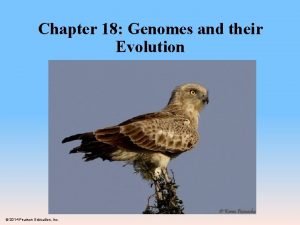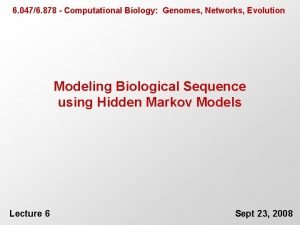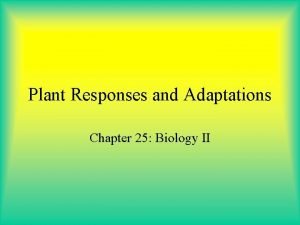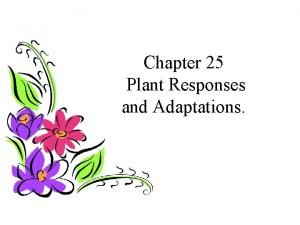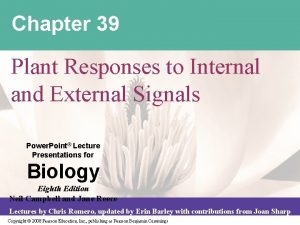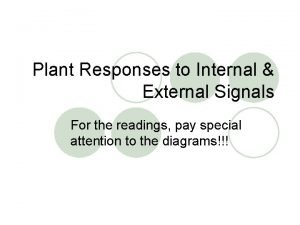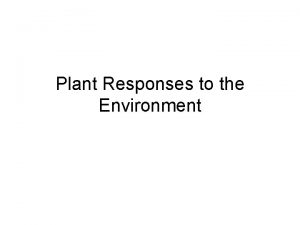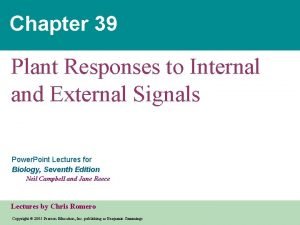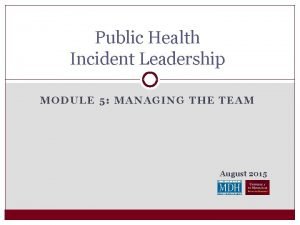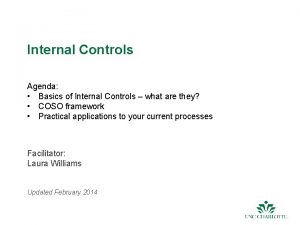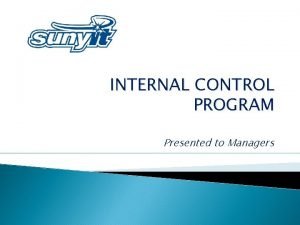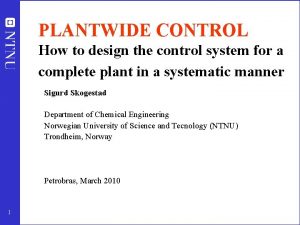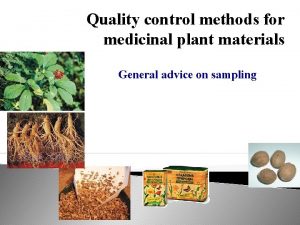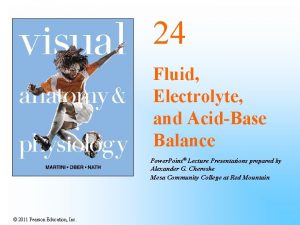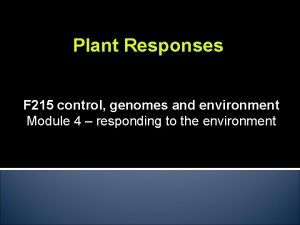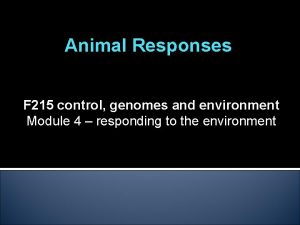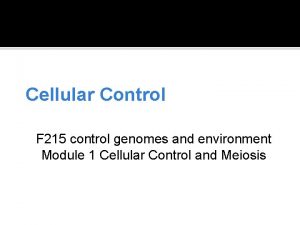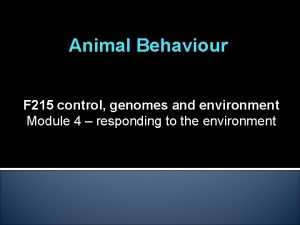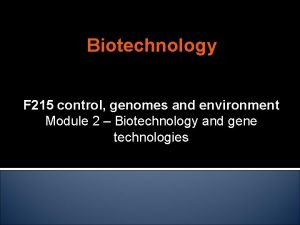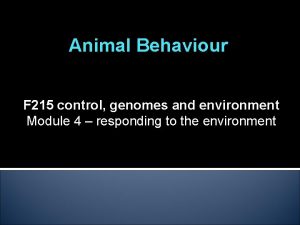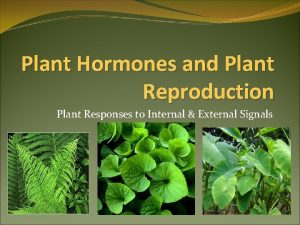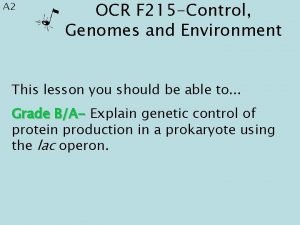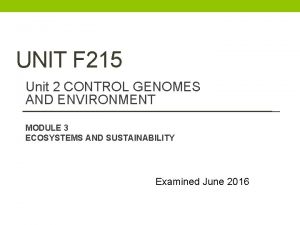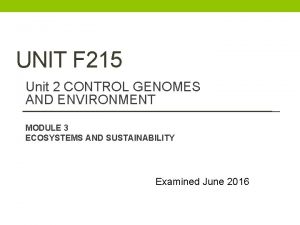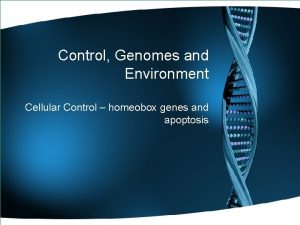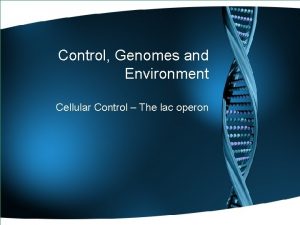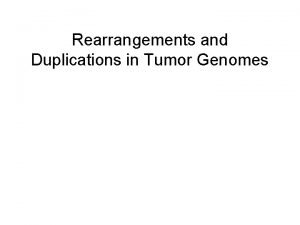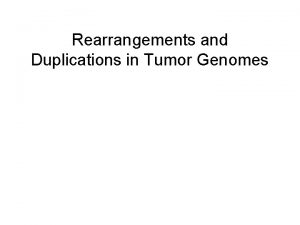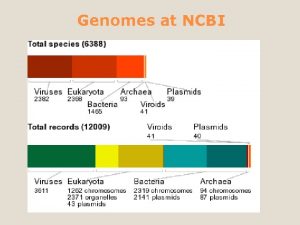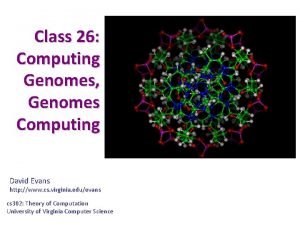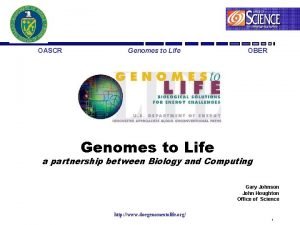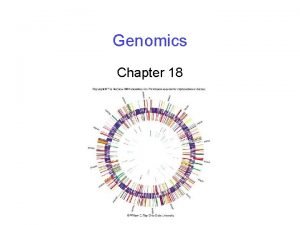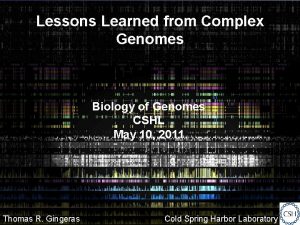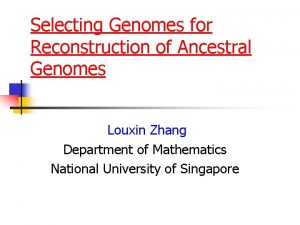Plant Responses F 215 control genomes and environment






















































- Slides: 54

Plant Responses F 215 control, genomes and environment Module 4 – responding to the environment

Learning Outcomes Explain why plants need to respond to their environment in terms of the need to avoid predation and abiotic stress.

Plant Responses Plants have evolved a wide range of responses to a large variety of stimuli, this helps them to Survive long enough to reproduce Avoid stress Avoid being eaten

Sensitivity in plants A plants responses to the external environment are mainly growth responses Plants must respond to: Light Gravity Water Chemicals Touch Plants communicate by plant growth regulators.

Learning Outcomes Define the term tropism. Explain how plant responses to environmental changes are coordinated by hormones, with reference to responding to changes in light direction.

Plant movements Nastic Movements Usually brought about by changes in turgidity in cells Rapid responses examples ▪ Venus fly trap shutting ▪ Leaves closing ▪ Petals closing

Nastic Movements Can you think of a nastic movement made by marram grass? Describe the response and its adaptive value to the plant.

Tropisms Slower responses resulting in directional growth “is a directional growth response in which the direction of the response is determined by the direction of the external stimulus”

Phototropism is the response of plant organs to the direction of light. A shoot shows Positive phototropism

Phototropism This is a growth response towards or away from light Look at the worksheet detailing some early experiments on phototropisms using oat, barley and wheat coleoptiles. Try to draw a conclusion to each experiment.

Darwin’s experiment

Darwin’s conclusions A growth stimulus is produced in the tip of the coleoptile Growth stimulus is transmitted to the zone of elongation Cells on the shaded side of the coleoptile elongate more than the cells on the other side.

Boysen-Jensen’s experiment

Boysen-Jensen’s experiment

Boysen-Jensen’s conclusions Materials which are not permeable to water can stop the curvature response in some circumstances Materials which are permeable to water do not interfere with the curvature response

Went’s experiment

Went’s conclusions

Went’s conclusions Angle of curvature is related to the number of tips used Number of tips used relates to the concentration of auxin in the agar block Curvature response is due to a chemical which moves from the tip and affects cell elongation

Phototropin, auxin and phototropism

Phototropin, auxin and phototropism Phototropins Proteins that act as receptors for blue light In plasma membrane of certain cells in plant shoots Become phosphorylated when hit by blue light If light is directional, then the phototropin on the side receiving the light becomes phosphorylated.

Phototropin, auxin and phototropism Phosphorylation of phototropin brings about a sideways movement of auxin More auxin ends up on the shady side of the shoot than on the light side Involves transporter proteins in the plasma membranes of some cells in the shoot, these actively move auxin out of the cell The presence of auxin stimulates cells to grow longer Where there is more auxin there is more growth

Auxin action Auxin binds to receptors in plasma membranes of cells in the shoot. This affects the transport of ions through the cell membrane Build up of hydrogen ions in the cell walls The Low p. H activates enzymes that break cross-linkages between molecules in walls Cell takes up water by osmosis, cell swell and become longer Permanent effect

Plant growth occurs at meristems Apical meristem Lateral bud meristems Lateral meristems Intercalary meristems

Learning outcomes Evaluate the experimental evidence for the role of auxins in the control of apical dominance and gibberellin in the control of stem elongation.

Why “plant growth regulators”? Exert influence by affecting growth Produced in a region of plant structure by unspecialised cells Some are active at the site of production Not specific – can have different effects on different tissues

The Plant growth regulators There are five main groups Auxins Gibberellins Cytokinins Abscisic acid Ethene

Plant growth regulators Produced in small quantities Are active at site of production, or move by diffusion, active transport or mass flow. Effects are different depending on concentration, tissues they act on and whethere is another substance present as well.

Interaction of plant growth regulators Synergism 2 or more act together to reinforce an effect Antagonism Have opposing actions and inhibit (diminish) each others effects.

Auxins Synthesised in shoot or root tips. Most common form is IAA (indole-3 acetic acid a. k. a. indoleacetic acid) Main effects of auxins include: Promote stem elongation Stimulate cell division Prevent leaf fall Maintain apical dominance.

Auxins and Apical Dominance Auxins produced by the apical meristem Auxin travels down the stem by diffusion or active transport Inhibits the sideways growth from the lateral buds

Apical Dominance

Apical Dominance

Mechanism for apical dominance Auxin made by cells in the shoot tip transported downwards cell to cell accumulates in the nodes beside the lateral buds Presence inhibits their activity

Evidence for mechanism (1) If the tip is cut off of two shoots Indole-3 -acetic-acid (IAA) is applied to one of them, it continues to show apical dominance The untreated shoot will branch out sideways

Evidence for mechanism (2) If a growing shoot is tipped upside down Apical dominance is prevented Lateral buds start to grow out sideways This supports theory Auxins are transported downwards, and can not be transported upwards against gravity

Question and reading Suggest how apical dominance could be an advantage to a plant! Read through Page 224 in your textbook “apical dominance”

Suggest!!

Gibberellins and stem elongation Gibberellin (GA) increases stem length Increases the lengths of the internodes ▪ Stimulating cell division ▪ Stimulating cell elongation

Evidence for GA and stem elongation Dwarf beans are dwarf because they lack the gene of producing GA Mendel’s short pea plants lacked the dominant allele that encodes for GA Plants with higher GA concentrations are taller

Action of GA Affects gene expression Moves through plasma membrane into cell Binds to a receptor protein, which binds to other receptor proteins eventually breaking down DELLA proteins bind to transcription factors If DELLA protein is broken down, transcription factor is released and transcription of the gene can begin

Gibberellins and germination of seeds Monocotyledonous plants e. g. barley and wheat Seeds can lay dormant until conditions are suitable for germination. Structure of a seed Pericarp and testa Aleurone layer – protein rich Endosperm – starch store Scutellum – seed leaf Embryo

Gibberellins in the germination of barley seeds Germination need suitable conditions, this requires presence of water, oxygen and an ideal temperature 1. Water enters seed 2. GA secreted by the embryo diffuses across endosperm to aleurone layer. 3. GA activates gene coding for amylase (transcription) 4. Amylase produced in aleurone and diffuses into the endosperm 5. Amylase hydrolyses starch into maltose 6. Maltose is hydrolysed into glucose, which diffuses into the embryo.

Learning Outcomes Outline the role of hormones in leaf loss in deciduous plants.

Leaf Abscission Trees in temperate countries shed their leaves in autumn. Survival advantage Reduces water loss through leaf surfaces Avoids frost damage Avoid fungal infections through damp, cold leaf surfaces Plants have limited photosynthesis in winter

Abscission and hormones Three different plant hormones control abscission Auxin ▪ Inhibits abscission Ethene (gas) ▪ Increase in ethene production inhibits auxin production Abscisic Acid

Abscisic acid Inhibits growth (antagonistic to GA and IAA) “stress hormone” Control stomatal closure Plays a role in leaf abcission Abscission plants. – falling of leaves or fruit from

Stages in leaf abscission As leaves age, rate of auxin production declines Leaf is more sensitive to ethene production More ethene produced, inhibits auxin production Abscission layer begins to grow at the base of the leaf stalk.

Leaf Abscission

Abscission Layer The abscission layer is made of thin-walled cells Weakened by enzymes that hydrolyse polysaccharides in their walls Layer is so weak that the petiole breaks Leaf falls off Tree grows a protective layer where the leaf will break off Cell walls contain suberin Leaves a scar which prevents the entry of pathogens

Learning Outcomes Describe how plant hormones are used commercially.

Commercial use of Auxins Sprayed onto developing fruits to prevent abscission Sprayed onto flowers to initiate fruit growth without fertilisation Parthenocarpy – promotes the growth of seedless fruits Applied to the cut end of a shoot to stimulate root production Synthetic auxins are used as selective herbicides

Commercial use of Ethene Fruits harvested before they are ripe allows them to be transported without deteriorating, these are sprayed with ethene to promote ripening at the sale point. E. g. bananas from the Caribbean

Commercial use of Gibberellin Sprayed onto fruit crops to promote growth onto citrus trees to allow fruit to stay on the trees longer Sprayed onto sugar cane to increase the yield of sucrose Used in brewing, where GA is sprayed onto barley seeds to make them germinate, amylase is produced, starch is broken down into maltose, the action of yeast on the maltose produces alcohol.

Commercial use of cytokinins Delay leaf senescence – can be sprayed on lettuce leaves to prevent them from yellowing Can be used in tissue culture to mass produce plants
 Chapter 18 genomes and their evolution
Chapter 18 genomes and their evolution Computational biology: genomes, networks, evolution
Computational biology: genomes, networks, evolution Chapter 25 plant responses and adaptations
Chapter 25 plant responses and adaptations Positive geotropism
Positive geotropism Plant hormones and responses
Plant hormones and responses Plant hormones and responses
Plant hormones and responses Plant responses to internal and external signals
Plant responses to internal and external signals Plant and animal responses
Plant and animal responses Chapter 39 plant responses to internal and external signals
Chapter 39 plant responses to internal and external signals Sentenza corte costituzionale 215/87
Sentenza corte costituzionale 215/87 Completed ics 215 form
Completed ics 215 form Servsoc/inicio.aspx
Servsoc/inicio.aspx 215-967-4690
215-967-4690 Computer arithmetic
Computer arithmetic Umich vlsi
Umich vlsi Ley 40/215
Ley 40/215 The formula c=5p+215 relates c
The formula c=5p+215 relates c Definition work physics
Definition work physics Dtu-215
Dtu-215 Tanget ratio
Tanget ratio Economic 215
Economic 215 Guggisberg 10 year development plan
Guggisberg 10 year development plan Stc 215/1994
Stc 215/1994 Tc 215
Tc 215 Round 54 681 to the nearest ten thousand
Round 54 681 to the nearest ten thousand Tronsmo plant pathology and plant diseases download
Tronsmo plant pathology and plant diseases download Tronsmo plant pathology and plant diseases download
Tronsmo plant pathology and plant diseases download Albugo eye
Albugo eye Financial environment of business
Financial environment of business Objective of plant breeding
Objective of plant breeding Plant breeding for disease resistance
Plant breeding for disease resistance Plant introduction in plant breeding
Plant introduction in plant breeding Good morning formal greetings
Good morning formal greetings Responses with too and either
Responses with too and either Shouldn't question tag
Shouldn't question tag French formal letters
French formal letters Leave taking informal
Leave taking informal Expressions of congratulations
Expressions of congratulations 8086 interrupt
8086 interrupt Chapter 10 stress responses and stress management
Chapter 10 stress responses and stress management Control environment
Control environment Control environment
Control environment Plant wide control
Plant wide control Quality control methods for medicinal plant materials
Quality control methods for medicinal plant materials Product inspection vs process control
Product inspection vs process control Lac operon positive control
Lac operon positive control Control flow error
Control flow error Micro model of consumer responses
Micro model of consumer responses Vacancy question responses usajobs
Vacancy question responses usajobs Facilitative responses
Facilitative responses Boscastle flood 2004 facts
Boscastle flood 2004 facts Are complex relatively brief responses
Are complex relatively brief responses What events provoke stress responses?
What events provoke stress responses? Role of lungs and kidneys in acid base balance
Role of lungs and kidneys in acid base balance What is an example of supportive communication
What is an example of supportive communication
